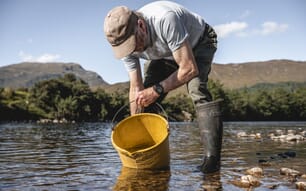Hatchery operators at fifty tilapia hatcheries in four governorates were interviewed and four focus group discussions were held with 61 participants in March 2012. Technical characteristics and economic performance data were obtained for three tilapia hatchery systems: hapa-based in earthen ponds (hapa), hapa-based in greenhouse tunnels (greenhouse) and concrete tanks in greenhouse tunnels with water heating (heated greenhouse).
The study showed that the average tilapia hatchery production was 9.92 million seed per year (5.82 million, 12.17 million and 12.25 million for hapa, greenhouse and heated greenhouse systems, respectively) while the average employment level was 4.5 full-time equivalents (FTE).
On average 95.8% of hatchery production was sold as fry, while only 4.3% of seed production was sold as fingerlings. Both total costs and total revenues were highest in heated greenhouse hatcheries, followed by greenhouse-based and lowest in hapa-based systems. Net profits were highest in greenhouse-based systems (45.1% of sales), compared to both heated greenhouse (33.2% of sales) and hapa-based systems (37.6% of sales).
Focus group discussions showed that hatchery operators currently face many critical factors: shortages of good quality brood fish; poor water quality and shortages of water; high fuel costs; lack of access to affordable finance; a ban on fry transport between governorates; and limited knowledge of best management practices.
The study concluded that greenhouse-based hatcheries are more profitable than heated greenhouse systems which produce more but face additional costs and hapa-based hatcheries which are low-cost but have a shorter production period. Greenhouse-based hatcheries are also more likely to remain profitable when faced with financial shocks.
May 2014



